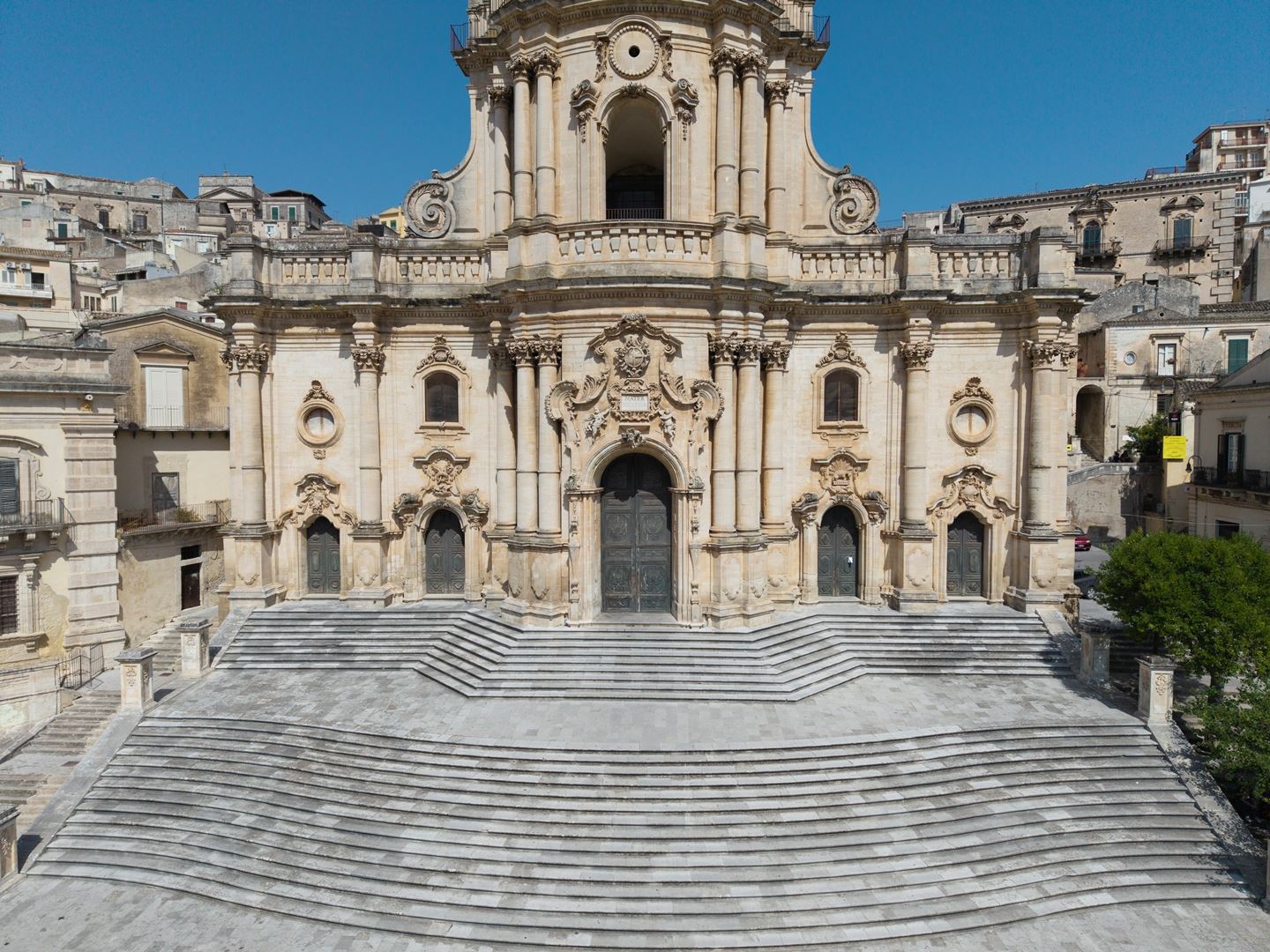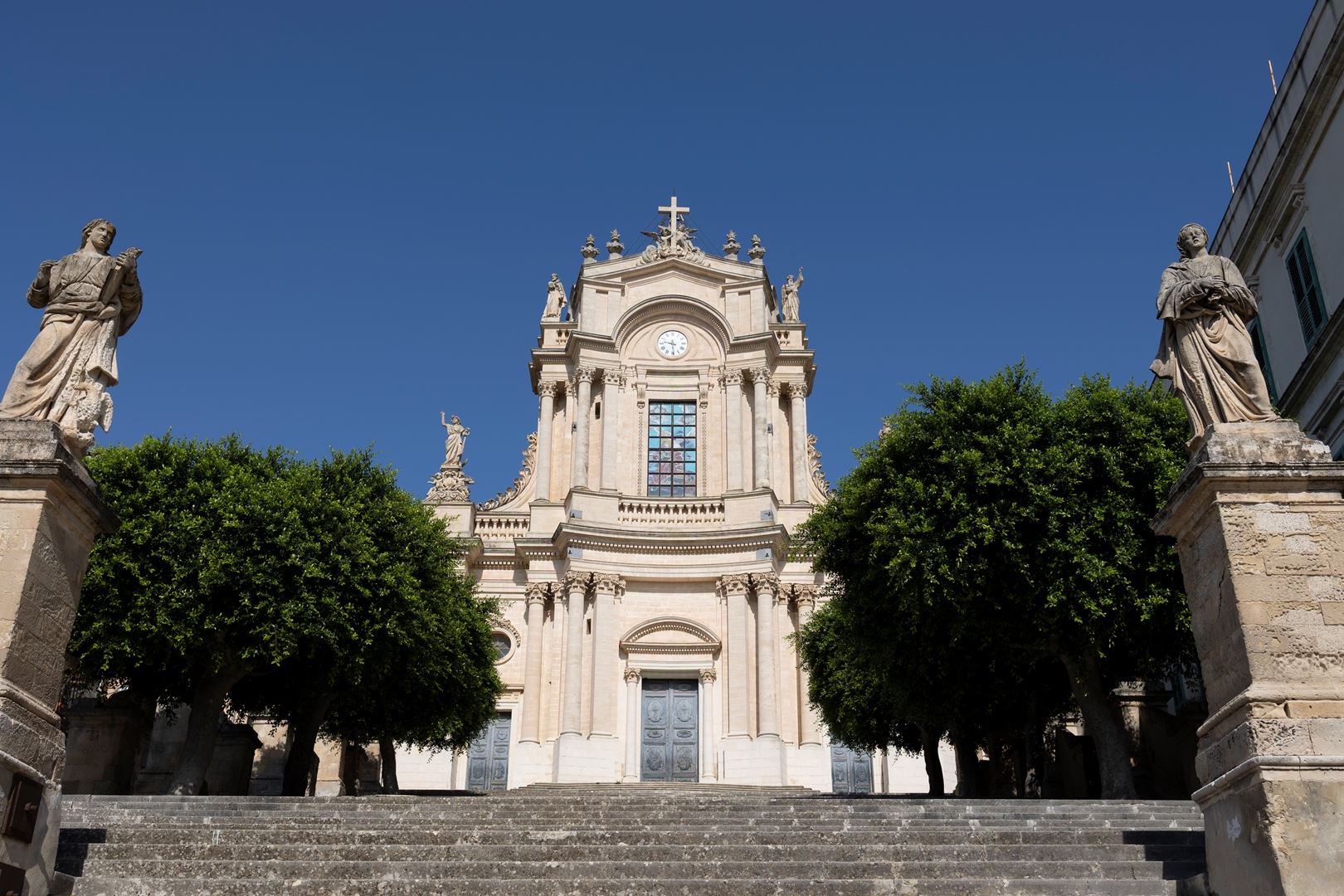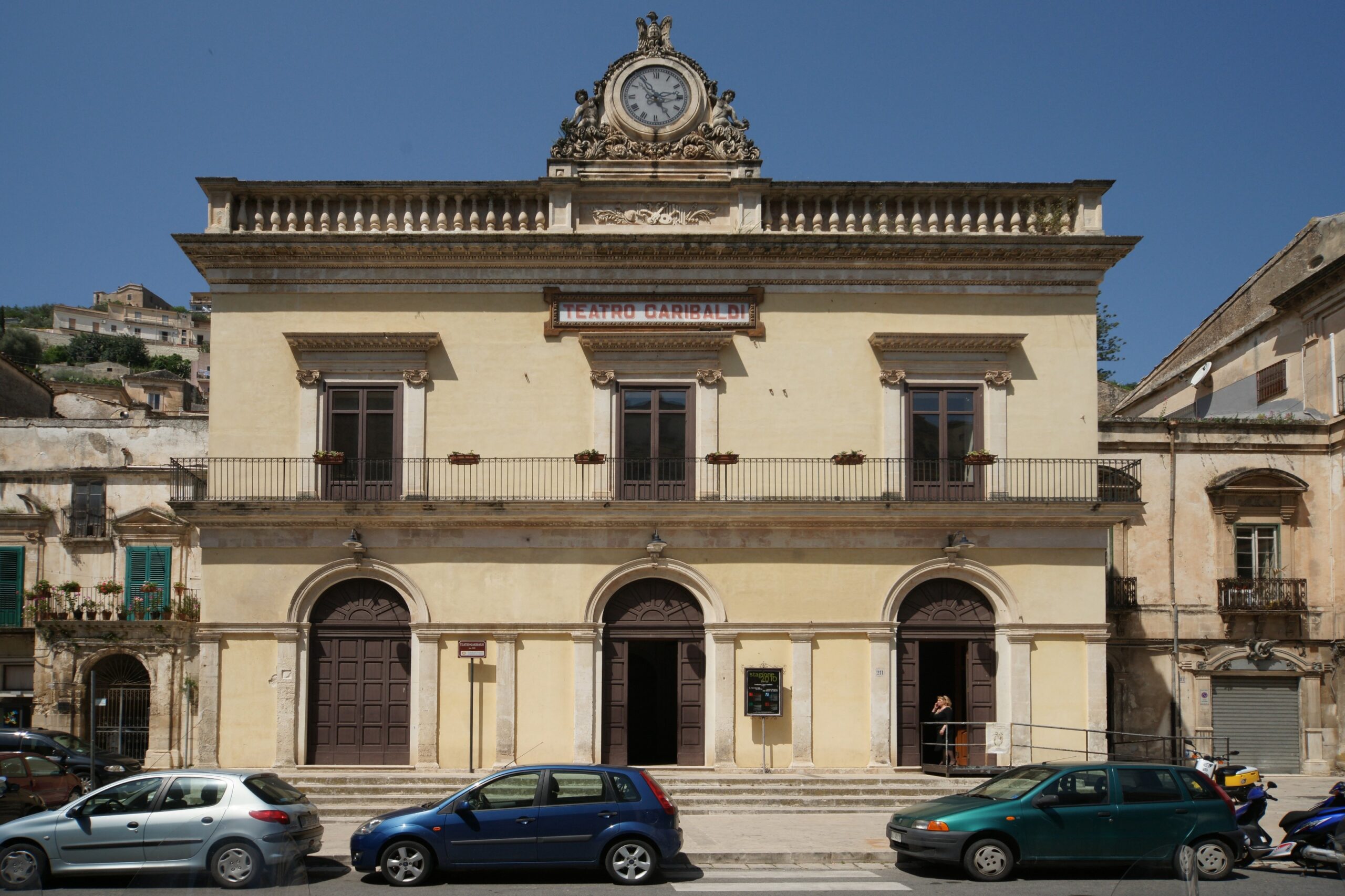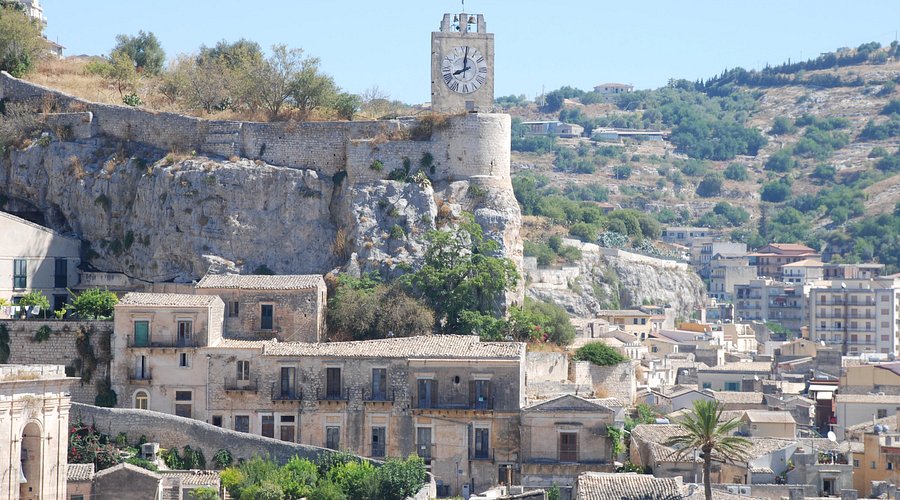Un viaggio nel cuore del barocco siciliano, tra chiese monumentali, musei insoliti e suggestivi belvedere. Il centro storico di Modica è un gioiello da esplorare a piedi, tra sapori, cultura e architetture che raccontano secoli di storia.
Modica Barocca: la città dei Conti

The route:

Duomo di San Giorgio
The Cathedral of San Giorgio is Modica's most majestic monument and one of the masterpieces of Sicilian Baroque. It was built over medieval buildings after the arrival of Ruggero d'Altavilla and, rebuilt several times after major earthquakes (1542, 1613, 1693), took on its current appearance between the 18th and 19th centuries. Architectural masterpieces such as the scenic staircase (up to 260 steps) and the 62 m high tower-facade emphasise its theatricality. Inside, a Latin-cross layout with 22 Corinthian columns, stucco work, frescoes, a monumental organ and works by Bernardino Nigro, Paladini, Cane and sculptors from Gagini create an impressive artistic itinerary. The floor sundial from 1895 and the “Santa Cassa” increase the cultural and historical value. A place of faith and identity, every year it is the scene of solemn processions, in particular that of St George, the city's patron saint. A UNESCO World Heritage Site, it is an essential stop for anyone visiting Modica who wants to immerse themselves in the splendour of the Eastern Baroque.


The birthplace of Salvatore Quasimodo


Chocolate Museum of Modica


Cathedral of San Pietro


The Collegiate Church of Santa Maria di Betlem


Church of San Giovanni evangelist


The Garibaldi Theatre


The “Franco Libero Belgiorno” Civic Museum


The Castle of the Counts of Modica

